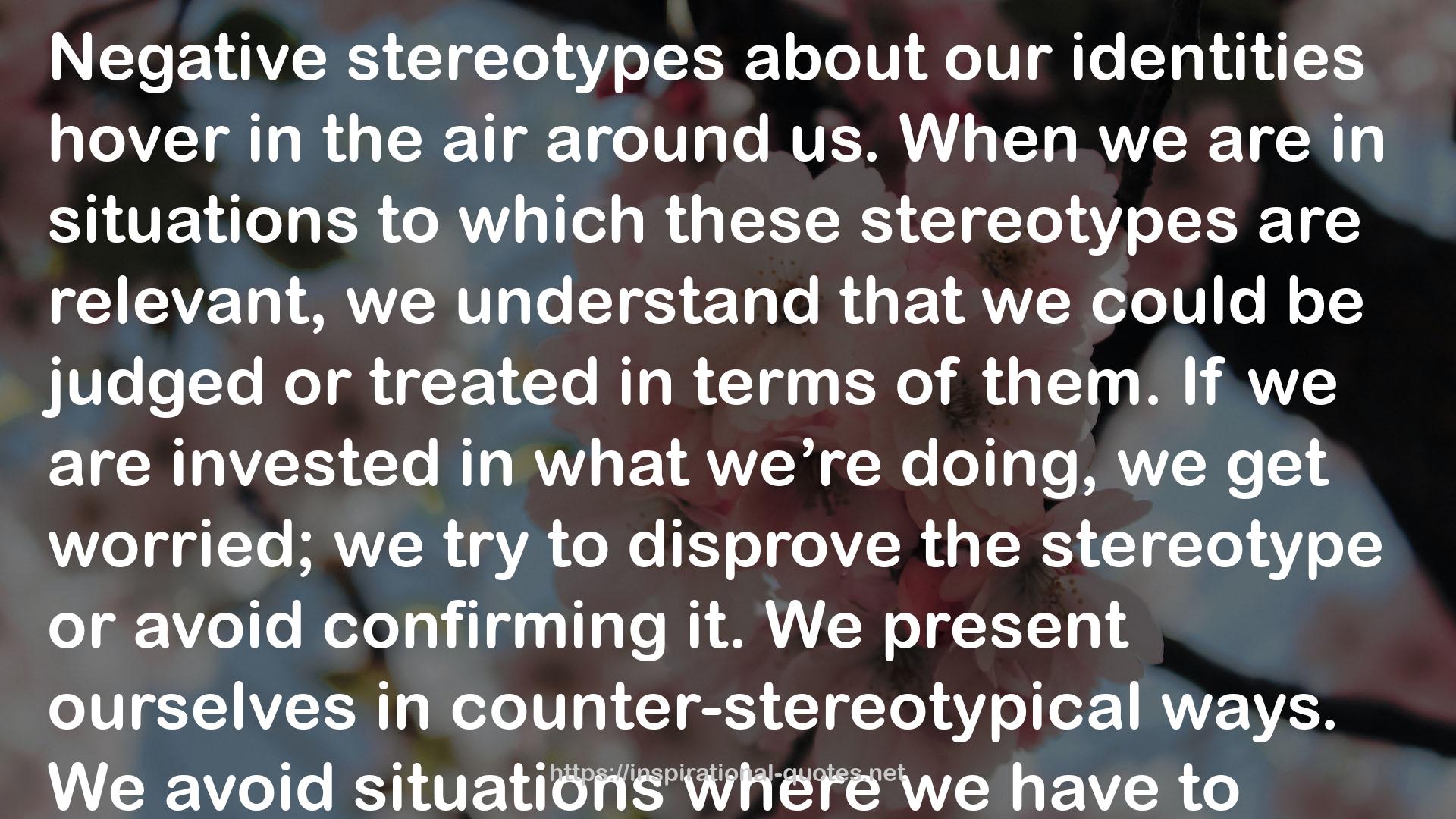" Negative stereotypes about our identities hover in the air around us. When we are in situations to which these stereotypes are relevant, we understand that we could be judged or treated in terms of them. If we are invested in what we’re doing, we get worried; we try to disprove the stereotype or avoid confirming it. We present ourselves in counter-stereotypical ways. We avoid situations where we have to contend with this pressure. It’s not all-determining, but it persistently, often beneath our awareness, organizes our actions and choices, our lives—like how far we walk down the aisle of an airplane to find a seat, or how well we do on a round of golf, or on an IQ test. We think of ourselves as autonomous individuals. After all, we make choices. But we often forget that we make choices within contexts, always. And pressure tied to our social identities is a component of these contexts. This is difficult to appreciate by reflecting on our experience. And yet, as I’ve have urged throughout this book, it is precisely these pressures that make a social identity real for us.
Stereotype threat is a broad fact of life. "
― , Whistling Vivaldi: And Other Clues to How Stereotypes Affect Us
